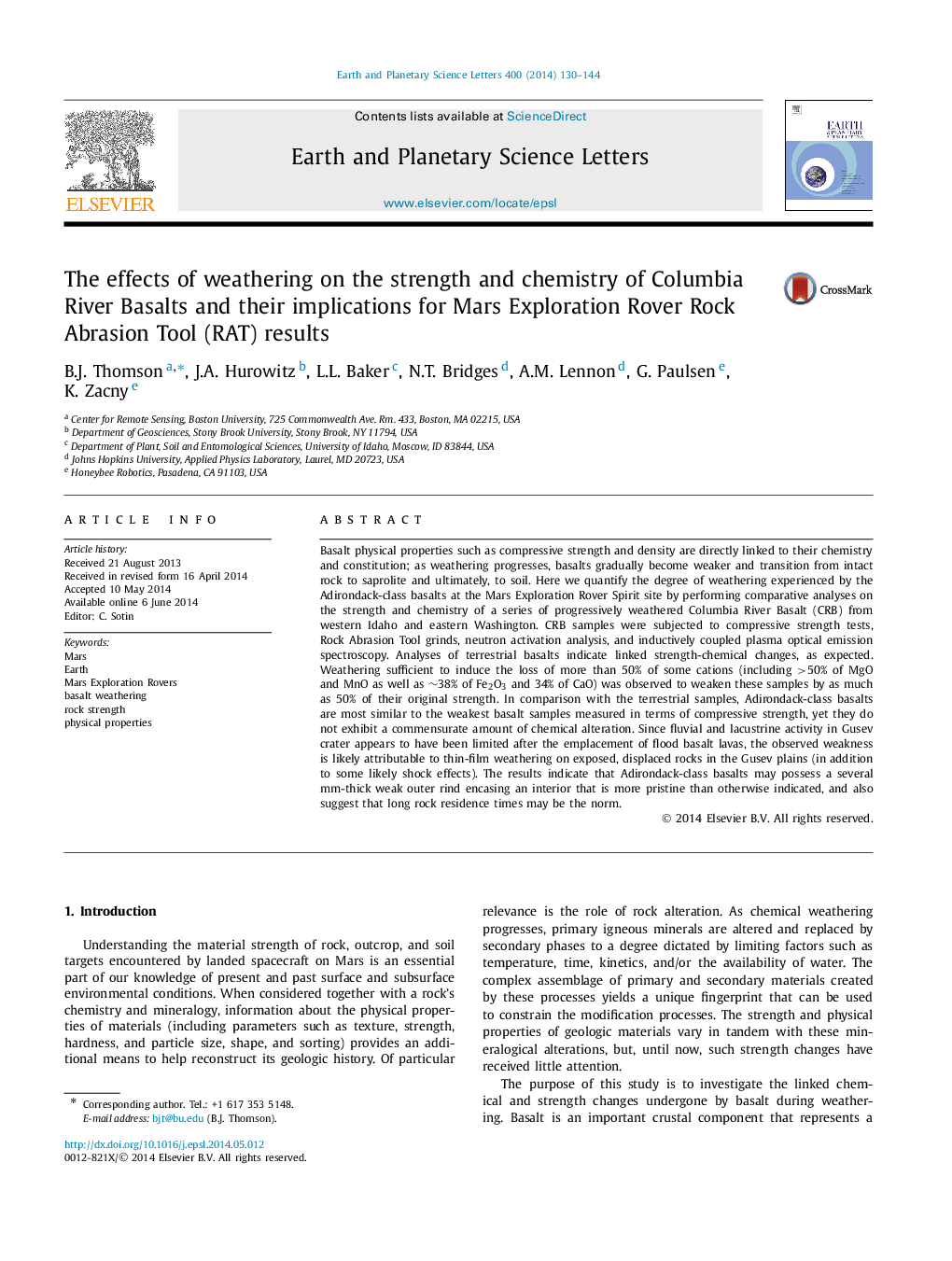| Article ID | Journal | Published Year | Pages | File Type |
|---|---|---|---|---|
| 6428763 | Earth and Planetary Science Letters | 2014 | 15 Pages |
â¢We examine weathering-induced weakness in Columbia River Basalt (CRB).â¢Basalts on Mars are similar in terms of compressive strength to the most weathered CRB samples.â¢Weathered basalts lose 40-50% of their strength and 15% of their bulk density.â¢Adirondack-class basalts on Mars may possess a several mm-thick weak outer rind.â¢Rocks on Mars have likely experienced >5Ã105 years of surface weathering.
Basalt physical properties such as compressive strength and density are directly linked to their chemistry and constitution; as weathering progresses, basalts gradually become weaker and transition from intact rock to saprolite and ultimately, to soil. Here we quantify the degree of weathering experienced by the Adirondack-class basalts at the Mars Exploration Rover Spirit site by performing comparative analyses on the strength and chemistry of a series of progressively weathered Columbia River Basalt (CRB) from western Idaho and eastern Washington. CRB samples were subjected to compressive strength tests, Rock Abrasion Tool grinds, neutron activation analysis, and inductively coupled plasma optical emission spectroscopy. Analyses of terrestrial basalts indicate linked strength-chemical changes, as expected. Weathering sufficient to induce the loss of more than 50% of some cations (including >50% of MgO and MnO as well as â¼38% of Fe2O3 and 34% of CaO) was observed to weaken these samples by as much as 50% of their original strength. In comparison with the terrestrial samples, Adirondack-class basalts are most similar to the weakest basalt samples measured in terms of compressive strength, yet they do not exhibit a commensurate amount of chemical alteration. Since fluvial and lacustrine activity in Gusev crater appears to have been limited after the emplacement of flood basalt lavas, the observed weakness is likely attributable to thin-film weathering on exposed, displaced rocks in the Gusev plains (in addition to some likely shock effects). The results indicate that Adirondack-class basalts may possess a several mm-thick weak outer rind encasing an interior that is more pristine than otherwise indicated, and also suggest that long rock residence times may be the norm.
